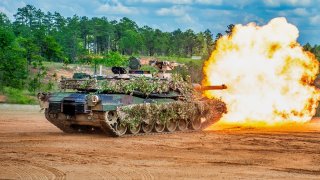Ukraine's High-Risk Gamble in Kursk: Disrupting Russian Reinforcements
Ukrainian forces have been targeting and destroying Russian transportation infrastructure in the Kursk region, particularly bridges over the Seym River, to hinder Russian reinforcements.
Summary and Key Points: Ukrainian forces have been targeting and destroying Russian transportation infrastructure in the Kursk region, particularly bridges over the Seym River, to hinder Russian reinforcements.
-Using satellite images, British Military Intelligence confirmed the destruction of road and pontoon bridges, which Ukraine is achieving through the use of suicide drones and missiles.
-The strikes aim to maintain Ukraine's presence inside Russia and draw Russian forces away from the main frontlines.
-However, this strategy is a calculated risk, as Ukraine must avoid overextending and losing key urban centers like Pokrovsk and Vuhledar in the Donbas, where Russian forces are advancing.
Striking at Russia's Infrastructure: Ukraine's Strategic Bridge Demolition
With the fighting inside Russia raging hot, the Ukrainian military has been targeting and destroying Russian transportation infrastructure in the area to prevent reinforcements from coming in.
The strikes seek to maintain Ukraine’s foothold inside Russia, and they seem to be working thus far.
Destroying Russian Bridges
“Ukraine continues to hamper Russian logistics in the Kursk region in a series of strikes which destroyed road and pontoon bridges over the Seym River,” the British Military Intelligence assessed in its latest operational estimate of the war.
The British Military Intelligence released three satellite images of the pontoon and road bridges on the Seym River. The first images were taken from August 14 to August 26 and show a series of bridges alongside the Seym River. Then, the initial images were compared with images taken from August 17 to August 28. The later images showed a series of destroyed bridges.
Pontoon bridges are much easier to replace than road bridges, however, even the Russian military, with its vast resources, doesn’t have an endless supply. Moreover, it only takes a handful of bridges to get destroyed for the Russians to stop putting down new ones.
The Ukrainian military has been using suicide drones and missiles to target Russian military infrastructure and high-value targets in Russia and Ukraine. However, the Ukrainian forces have thus far been restricted in the specific munitions that they can use against targets within Russia. Particularly powerful munitions, such as the MGM-140 Army Tactical Missile System (ATACMS) and the Storm Shadow air-launched cruise missile, have been off the table, with the United States and the United Kingdom imposing restrictions on their use. However, there is an ongoing diplomatic push to change that and allow the Ukrainian forces to use these advanced munitions for all targets.

A Strategic Gamble
The goal of the Ukrainian military is likely to prolong the incursion into the Kursk Oblast for as long as possible. By doing that, Kyiv likely hopes to draw Russian forces and resources in the area that would otherwise be sent to Ukraine. In some regards, Kyiv has succeeded. After the initial shock, the Kremlin had to relocate units from the contact line in Ukraine to the Kursk Oblast. But the vast majority of units came from rather quiet areas of the frontline.
Ukraine’s offensive-defense strategy is reasonable on a battlefield where the combat capability of the two sides is similar enough to prevent an operational breakthrough. But Kyiv needs to be careful not to overextend and suffer defeats at home. Creating a second front in Russia has little strategic value if Kyiv starts losing important urban centers and logistical hubs along the contact line like Pokrovsk and Vuhledar in the Donbas. The Russian forces are pushing hard to capture those two towns and are making steady progress.
The balance is definitely tight. But Kyiv and the Ukrainian military have shown in the past that they can take gambles and win.
About the Author:
Stavros Atlamazoglou is a seasoned defense journalist specializing in special operations and a Hellenic Army veteran (national service with the 575th Marine Battalion and Army HQ). He holds a BA from the Johns Hopkins University and an MA from the Johns Hopkins’ School of Advanced International Studies (SAIS). His work has been featured in Business Insider, Sandboxx, and SOFREP.
Image Credit: Creative Commons and/or Shutterstock.


